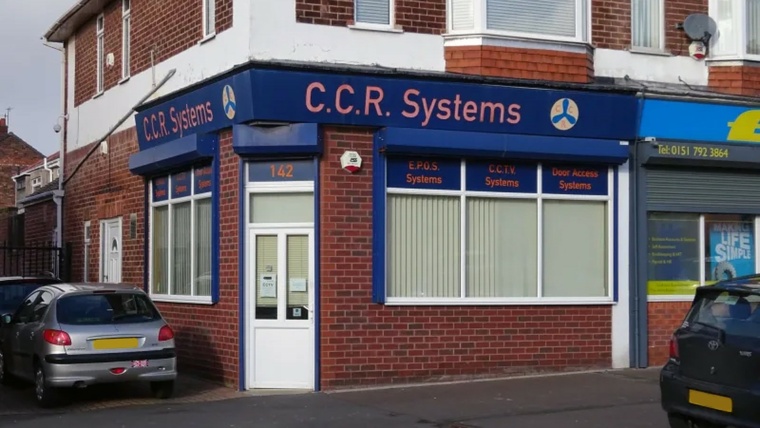The future of business communications is digital – and it’s arriving faster than many realise. By January 2027, all traditional landlines in the UK will be phased out and replaced with digital phone services delivered over broadband. This nationwide upgrade is already well underway, and over two-thirds of UK landlines have transitioned. Businesses in the Liverpool City Region, from independent retailers in Southport to manufacturers in Halton, must act now to avoid disruption.
In this expert guide, we break down what the landline switch-off means, why it’s happening, what devices will be affected and how Excel Communications can help your organisation navigate the change with confidence.
What Is the UK Landline Switch-Off?
The UK telecommunications industry is retiring the analogue infrastructure that has underpinned phone services for decades. This includes the copper wire networks that have connected traditional landline phones to the telephone exchange.
In its place, all voice communication will be delivered digitally via broadband using technologies such as:
-
Voice over Internet Protocol (VoIP)
-
Digital Voice
-
All-IP telephony
This transition is being led by network providers such as Openreach, in coordination with major communications providers (e.g. BT, Virgin Media O2, Vodafone, KCOM), and supported by the UK government.
Why Is This Change Necessary?
The legacy analogue telephone network is no longer sustainable. It was never designed for the digital age and is now facing insurmountable challenges:
-
Ageing Infrastructure: Parts are no longer manufactured, with engineers relying on recycled components.
-
Rising Faults: In 2024 alone, over 2,600 major faults were reported on the legacy system, a 45% increase from the previous year.
-
Environmental Vulnerability: The system is more prone to failure during heatwaves and storms.
-
Security and Efficiency: Digital lines are more secure, easier to maintain and capable of blocking nuisance or scam calls automatically.
Matt Stead, Business Director at Excel Communications, explains:
“This is one of the most significant changes to UK infrastructure in decades. It’s about more than just phone calls – it’s about ensuring your entire communications framework is modern, reliable and fit for purpose. Businesses that delay risk operational disruption and reputational damage.”
What Devices Will Be Affected?
This switchover affects far more than phones. Many business-critical systems are connected to the current landline infrastructure and will require digital compatibility checks.
Devices at risk include:
-
Desk phones and handsets connected via phone sockets
-
Credit card terminals
-
Fire and intruder alarm systems
-
Lift emergency phones and intercom systems
-
Entry/access control devices
-
Fax machines and legacy multifunction printers
-
Telecare systems (used in supported housing, care homes or health environments)
Any device using the traditional landline must be reviewed for compatibility. If it isn’t compatible, it will need to be upgraded, replaced or connected via a different digital pathway.
How Will the Switchover Work?
Your communications provider (as named on your business phone bill) will contact you ahead of migration. Depending on your set-up, the switch might involve:
-
Replacing your current landline handset
-
Connecting your phone to a broadband router instead of a wall socket
-
Installing a digital voice adapter
-
Scheduling an engineer visit for complex systems or multiple device types
If your premises do not currently have broadband, some providers may offer an interim solution until full digital services are available. However, these will be phased out no later than 2030.
What Happens in a Power Cut?
One of the key differences between analogue and digital landlines is power dependency. Traditional landlines continue to work during a power outage. Digital phone lines do not, unless you have:
-
A battery backup unit
-
A mobile device available as an alternative
-
A dedicated resilience solution offered by your provider (especially for vulnerable users)
For businesses providing health, care or safety-critical services, this is especially important. Excel Communications can assess your continuity needs and recommend solutions that maintain communication even during a power failure.
How Businesses Should Prepare
1. Conduct a Full Communications Audit
Document every device or service in your business that uses a phone line. This should include not only phones, but any system connected via analogue ports.
2. Speak to Your Communications Provider
Your current provider will outline the migration timeline, required equipment and available support. However, they may not be aware of your specific infrastructure, so it’s up to you to give them a complete picture.
3. Contact Excel Communications for Expert Support
Based in the Liverpool City Region, Excel Communications has deep experience supporting businesses through digital transitions. We work with local SMEs, multi-site organisations and public sector bodies to deliver tailored, disruption-free migrations.
4. Upgrade or Replace Legacy Equipment
Some older devices will not work on a digital line and must be replaced. Where possible, choose all-IP devices that are designed for broadband connectivity and future-proofed for ongoing digital upgrades.
5. Assess Broadband Readiness
If your business broadband is slow, unreliable or underpowered, now is the time to upgrade. Digital voice services rely on a stable internet connection.
6. Review Power Backup Arrangements
If communications are mission-critical, ensure backup solutions are in place. These may include UPS systems, 4G failovers or mobile fallback plans.
7. Update Contracts and Suppliers
Check whether third-party providers (e.g. facilities management, security firms, fire system engineers) are aware of the switchover and are preparing their systems accordingly.
Public Sector and Supported Housing: Extra Considerations
If you operate within care, supported housing, social services or local government, you have additional responsibilities. Residents and service users who rely on telecare or emergency alarms are particularly vulnerable during this transition.
Excel Communications works directly with housing associations, local authorities and care providers to ensure:
-
Telecare devices are digitally compatible
-
Emergency communications remain operational during outages
-
Staff are trained on new systems and protocols
-
Migrations occur with minimal risk and maximum communication
Why Work with Excel Communications?
Serving the Liverpool City Region for over 15 years, Excel Communications is a trusted partner for telecoms transformation. We’re helping organisations across Merseyside futureproof their communications infrastructure before the 2027 cut-off.
“This isn’t about simply swapping out a handset,” adds Matt Stead. “It’s about making sure your business is ready – technically, operationally and strategically – for a connected digital future. Excel Communications is here to guide businesses through that process from start to finish.”
Get Expert Help Today
Don’t leave the switch until the last minute. Businesses that plan now will save time, reduce risk and ensure continuity.
Contact Us:
📞 Call: 0800 711 7111
📧 Email: info@excel-comms.co.uk




